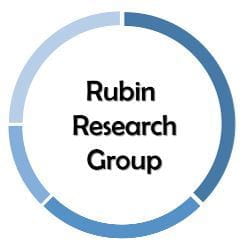
Lab and Research Groups
The UC Santa Cruz Genomics Institute is comprised of a team of researchers and staff in a network of affiliated labs and genomics research groups across campus. Below are links to our affiliated labs and genomics research groups.
Applied Optics Group
The Applied Optics Group is run by Holger Schmidt, co-PI on the Center for Live Cell Technology. The group develops new, highly sensitive methods to study single particles with optical methods.

Ares Lab
The work of the Ares Lab centers on the mechanisms and regulation of splicing to remove intron sequences from pre-mRNA and create coding sequences for translation. They seek to understand the mechanism of action of the core components of the spliceosome, the regulation of alternative splicing at a mechanistic level, and the origin of introns and evolution of the splicing machinery.

Arribere Lab
The Arribere Lab studies how information is decoded from the genome, focusing on the understudied steps of mRNA translation (protein synthesis) and mRNA decay and the question of how the gene expression program deviates from normal for individual mRNAs.

Braingeneers
The Braingeneers are experimenting with cerebral organoids — structures grown in the lab that function like the brain of a developing embryo — and applying modern artificial intelligence (AI) approaches to enable an unprecedented window into brain development.

BRCA Exchange
We are developing the BRCA Exchange, a comprehensive, global data repository to catalogue variation within the BRCA genes and to collect individual-level evidence for their classification. The scientific and medical communities have a tremendous and urgent need for a comprehensive data store of variants.

Brooks Lab
The Brooks Lab is committed to developing novel sequencing analysis tools to study and fight cancer.

CALeDNA Headquarters Lab
Rachel Meyer directs the CALeDNA citizen and community science program to help catalog and preserve genomic diversity in California. Meyer focuses on projects related to genomics and conservation.

Carpenter Lab
The Carpenter lab is focused on understanding the molecular mechanisms that control the innate immune responses.

Chamorro-Garcia Lab
The Chamorro-Garcia lab is interested in better understanding how environmental agents such as pollutants, diets, temperature or stress, shape our phenotype. Their main focus is to study mechanisms of genome-environment interactions using mouse models.

Center for Live Cell Technology
While past research has focused on analyzing cells at a single fixed moment in time, live cell technology studies cell clusters as they live, grow, and develop. This is an entirely new way of researching cell growth and change. Studying complex three-dimensional cell cultures as they grow will allow us to better understand where and how mutations impact human tissue function and cause disease.

Center of Molecular Biology of RNA
The Center is the largest and most prominent grouping of RNA researchers in the world, with 20 RNA research groups, three members of the National Academy of Sciences, a Nobel laureate and a Breakthrough laureate.

The Colligan Clinical Diagnostic Lab (CCDL)
The Colligan Clinical Diagnostic Lab (CCDL)’s vision is to translate UC Santa Cruz’s cutting-edge genomic research tools into clinical care.

Colquitt Lab
The Colquitt Lab studies the development and evolution of sensorimotor behaviors, using birdsong and its neural circuitry as a model system. The lab seeks to understand the cellular and molecular basis of behavioral evolution.

Computational Genomics Lab and Platform
The goal of the Computational Genomics Lab is to provide transformative resources for global research communities. Its Computational Genomics Platform (CGP) group is focused on developing computational platforms based on the research of CGL. The CGP’s portfolio includes the Dockstore workflow repository, Toil workflow engine, Redwood cloud storage system, and the Boardwalk visualization portal. In affiliation with the GA4GH, Dockstore’s ultimate goal is to create a federated network of globally distributed, searchable data repositories.
The CGL is also a main collaborator on an effort to diversify the human genome (Pangenome Project) and the Human Cell Atlas (HCA) Data Sharing Platform that aims to map and characterize every human cell type.

Corbett-Detig Lab
The Corbett-Detig Lab focuses on a broad range of questions at the interface of genomics, evolutionary biology, statistics, and computer science. Among other projects, they have a strong focus on tool development and applications for SARS-CoV-2 phylogenomics (see pathogen genomics) and lead the informatics for the California Conservation Genomics Project.

Cornejo Lab
In our lab we study how natural selection drives the adaptation of microbes to their hosts and how hosts develop disease resistance. We focus on the evolutionary context (historical demographics and especial geological and anthropological events) under which selection drives the gain or loss of genetic variants using study systems in humans, microbiomes, malarial parasites, and plants.

Daniel Kim Lab
The Daniel Kim Lab studies how RAS signaling regulates the noncoding transcriptome during the earliest stages of cancer and development.

DANSER Lab
DANSER is the Dynamics, Autonomous Navigation, Surface Engineering, and Robotics Lab at the University of California Santa Cruz.

DuBois Lab
The DuBois Lab seeks to understand the molecular mechanisms of virus infections, and to use this information to develop new vaccines and antiviral therapeutics.

Frick Lab
The Frick Lab investigates species interactions at multiple scales and in different ecological contexts with the goal of discovering ecological dynamics that improve our ability to conserve biodiversity. Most of their research focuses on bats, which make up a quarter of all mammalian diversity.

Genome Browser Group
The UCSC Genome Browser is a web-based tool serving as a multi-powered microscope that allows researchers to view all 23 chromosomes of the human genome at any scale from a full chromosome down to an individual nucleotide.

Global Change Research Group
The Global Change Research Group studies how life adapts to climate change and variability, from genes to communities, and works with partners to apply this knowledge to ocean conservation and species rescue.

Greider Lab
Carol Greider won the Nobel Prize in 2009 for the discovery of how chromosomes are protected by telemeres. Her lab is interested in understanding the fundamental mechanisms that regulate telomere length, the failure of which can lead to disease.

Haussler-Salama Lab
The Haussler-Salama “wet lab” has been devising innovative experimental approaches using pluripotent stem cells, genome-wide measurements of gene expression and gene regulatory activity, and CRISPR/Cas9 gene editing approaches to understand how recent genome evolution contributes to human development and disease.

Human Paleogenomics Lab
UCSC Human Paleogenomics Lab looks at the twin forces of culture and biology in shaping human genomic diversity, demography and health.

Institute for the Biology of Stem Cells (IBSC)
The Institute for the Biology of Stem Cells (IBSC) at UC Santa Cruz aims to support and advance stem cell research by promoting interdisciplinary discoveries in biology, engineering, and information science.

Integrative Carnivore EcoPhysiology (ICE) Lab
The Williams ICE Lab is dedicated to studying the comparative ecophysiology and exercise physiology of humans and the largest, most endangered mammals to walk on land and swim in the oceans.

Jönsson Lab
The Jönsson Lab aims to understand how the immune system evolves in the context of human disease. They develop mathematical models and build computational methods for the analysis of high throughput genomic and immunological data.

Kay Plant Evolution Lab
Research in the Kay Plant Evolution lab centers on understanding diversification mechanisms of flowering plants, including adaptation and speciation.

Kelley Lab
The Kelly Lab focuses on evolutionary and functional genomics and adaptation to extreme environments. They are interested in understanding how populations diverge and adapt to the environments they encounter.

Lederman Lab
The Lederman group seeks to understand the fundamental properties of materials in reduced dimensions. Of particular interest are properties resulting from interfaces between dissimilar materials (e.g., magnetic, ferroelectric, multiferroic, and biological materials).

Lokey Lab
The Lokey research group focuses on the relationship between molecular structure and drug-like properties, especially cell permeability. Professor Lokey is also the director of the UCSC Chemical Screening Center at UC Santa Cruz.

Lowe Lab
Lowe Lab’s research uses a mixture of computational and experimental methods to identify and characterize the function and regulation of non-coding RNAs (ncRNAs) in many species including humans, mice, yeast, and archaea (microbes that live in extreme environments).

Macias-Muñoz Lab
The Macias-Muñoz Lab focuses on understanding the molecular underpinnings of complex trait evolution, using genomics and transcriptomics in invertebrates to determine the similarities and differences in genes encoding similar traits across taxa.

Marinescu Lab
The Marinescu lab focuses on machine learning and its applications to healthcare and biomolecular systems. Their specific focus is on molecular dynamics, differentiable simulators, ML compositionality and generative modeling.

Miga Lab
The Miga Lab at UCSC focuses on genomic and epigenetic structure within human centromeres and constitutive heterochromatin. They are particularly interested in understanding how satellite DNAs, or the tandem repeats in these regions of the genome, are epigenetically regulated, change over time, and how this new variation contributes to disease.

Molecular Ecology & Evolution of Fishes Lab
Work at the Molecular Ecology and Evolution of Fishes lab concentrates on four main areas of research: speciation of fishes; the genetics of Lessepsian Bioinvations; coral reef management in Yap State, Micronesia; and long term ecological research.

Nanopore Group
The Nanopore Group’s research is focused on the use of nanopore detectors, instruments built around a nano-scale pore in a thin membrane, for the study of biopolymers.

Yeh (Neolux) Lab
The Neolux Lab uses cutting-edge protein design and chemical biology approaches to design biological light (Lux) from scratch (Neo), engineer them to sense/control biological circuits, and build molecular probes to identify new diagnostics and therapeutics.

Paleogenomics Lab
Research at the UCSC Paleogenomics Lab focuses on a wide range of evolutionary and ecological questions, mostly involving the application of genomics techniques to better understand how species and populations evolve through time

Freshwater and Coastal Ecology Lab (Palkovacs) Lab
The Palkovacs Lab studies the eco-evolutionary dynamics of freshwater and coastal ecosystems. They examine how evolution shapes populations, communities, and ecosystems and how these ecological changes feed back to shape the trajectory of evolution.

Pathogen Genomics
UC Santa Cruz is drawing on its expertise in genomics and data sharing to lead a California Dept. of Public Health (CDPH)-sponsored program to allow public health experts to use virus genomes to track who is catching the virus and how.

Pogson Lab
The Pogson Lab is interested in the origins of speciation and the natural forces that shape the divergence of populations and propagation of species.

Pourmand’s Research Group
Pourmand’s research is motivated by the philosophy that the best way to accelerate discovery is to develop innovative tools that will enable sweeping advances in knowledge and demonstrate such advances through the application of newly developed technologies.

Rolandi Research Group
Marco Rolandi’s research focuses on micro- and nano- biological and bioinspired structures, their integration in biocompatible devices, and their translational applications. He is currently working on creating a closed loop control bioelectronic strategy to expedite the healing of wounds.

Rubin Lab
The Rubin Lab is researching the molecular mechanisms controlling the cell division cycle and DNA replication with the aim of informing the development of novel therapeutics.

Russell Microbial Symbiosis Lab
The Russell lab is working to understand the evolutionary and molecular mechanisms underlying host-symbiont interactions. They use a range of powerful methodological skill and tool-sets, ranging from microscopy, to cell biology, to next-gen sequencing and computational biology, to interrogate the host and symbiont simultaneously.

Sanford Lab
The goal of Sanford laboratory is to illuminate post-transcriptional networks coordinated by RNA binding proteins. To achieve this goal they employ genomic, biochemical, and computational methods to identify cis-acting RNA elements recognized by a complete family of phylogenetically conserved, essential RNA binding proteins in a comprehensive manner.

Science and Justice Research Center
Science & Justice generates modes of inquiry and empirically rigorous research that address these enormous challenges and support livable worlds.

Sharf Lab
The Sharf lab seeks to understand human neurodevelopment by combining 3D human stem-cell brain models with high-resolution neuro-electronics and optogenetic tools to map and interact with neuronal circuitry. They are a part of the Braingeneers group.

Shariati Lab
The Shariati Lab focuses on understanding and engineering cell fate. Their research aims to support regregrow, heal, or replace damaged or diseased parts of the body.

Sharma Lab
The Sharma Lab studies how environmental conditions modulate specific epigenetic marks in germ cells and how those marks influence the development of offspring. They are using a unique combination of genomic, molecular, cellular, and reproductive approaches to address this question.

Sikandar Lab
The Sikandar Lab is interested in questions pertaining to functional consequences of heterogeneity in stem cells in normal and cancer tissues. We use a combination of computational and wet-approaches to study stem/progenitor cells in the mammary gland and tumor initiating cells in breast cancer.

The Stem Cell Hub
The stem cell hub is a data warehouse for stem cell genomic files. It houses primary data files such as DNA reads in fastq format, as well as many types of files derived from mapping and other analysis of the primary data, and PDF and other document files describing protocols.

Stone Research Group
The Stone Research Group at the University of California Santa Cruz is broadly interested in nucleic acid (RNA and DNA) structure and function. A primary research focus for the group is human telomerase – a specialized protein-RNA complex enzyme that maintains the telomere DNA at the ends of chromosomes.

Storage Systems Research Center
SSRC’s research focuses on many aspects of file and storage systems. The SSRC has active projects in operating systems for non-volatile memory-based systems, systems that provide “forgettable” storage, and archival storage.

Systems Biology Group (Stuart Lab)
The Stuart lab uses data-driven approaches to identify and characterize genetic networks, investigate how they’ve evolved, and then use them to simulate and predict cellular behavior.

Treehouse Childhood Cancer Initiative
The Treehouse Childhood Cancer Initiative was established to analyze genomic data of children with cancer in the context of large datasets of both pediatric and adult cancers.

UCSC Xena
UCSC Xena Functional Genomics Browser with analytics, visualization and Galaxy integration for analyzing and viewing the public data hubs.

Vaske Lab
The Olena Morozova Vaske Lab is dedicated to improving the diagnosis and treatment of children affected by rare genetic diseases.

Velasco Lab
The Velasco lab aims to characterize and manipulate the properties of two-dimensional materials (2D) with unprecedented sensitivity and atomic scale precision. The properties of these materials are being intensively studied because of their unique electronic and structural attributes, which may form the basis of future electronic devices.

Vertebrate Genome Project/ Genome 10k
Their mission is to understand how complex animal life evolved through changes in DNA and use this knowledge to become better stewards of the planet.

Vollmers Lab
The Vollmers Lab is focused on DNA sequencing tools to analyze B cells on a population and single cell level.

Yan Lab
The Yan lab focuses on atomic-/nano-scale structural and property tailoring, and in-situ/operando study of functional materials via combined synthesis and advanced microscopy approaches. They are especially interested in precise structural design of atomically thin two-dimensional materials using a state-of-the-art in-situ transmission electron microscope that is equipped with a sub-Angstrom electron beam.

Zhou Group
The Zhou Group focuses on advancing biomedical artificial intelligence, primarily in the field of medical image analysis. Their ultimate goal is to match medical experts in decision-making.
